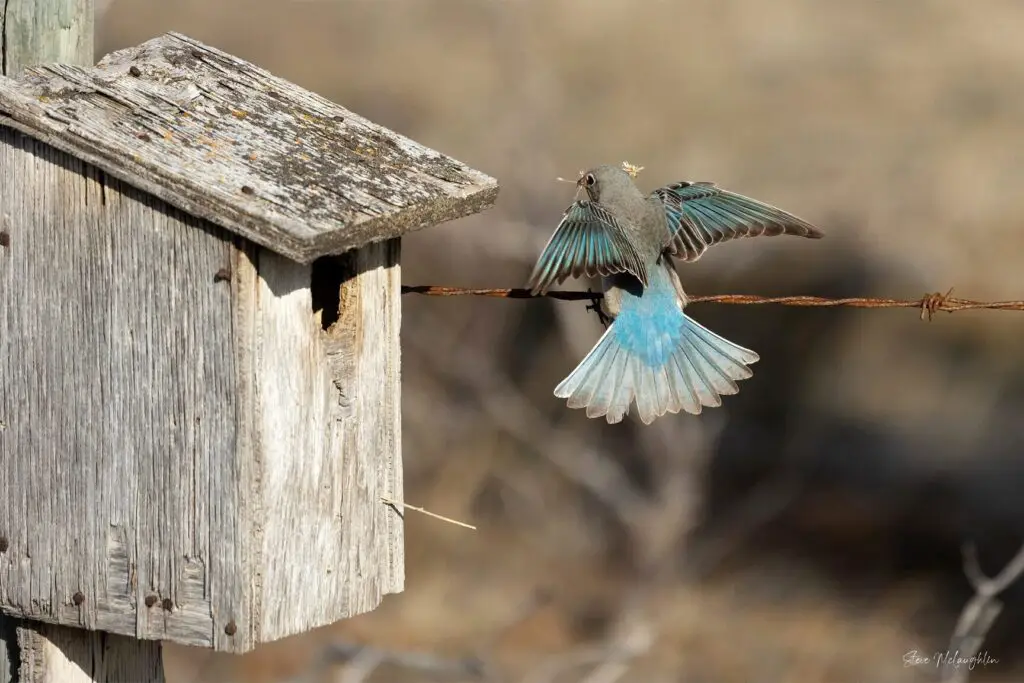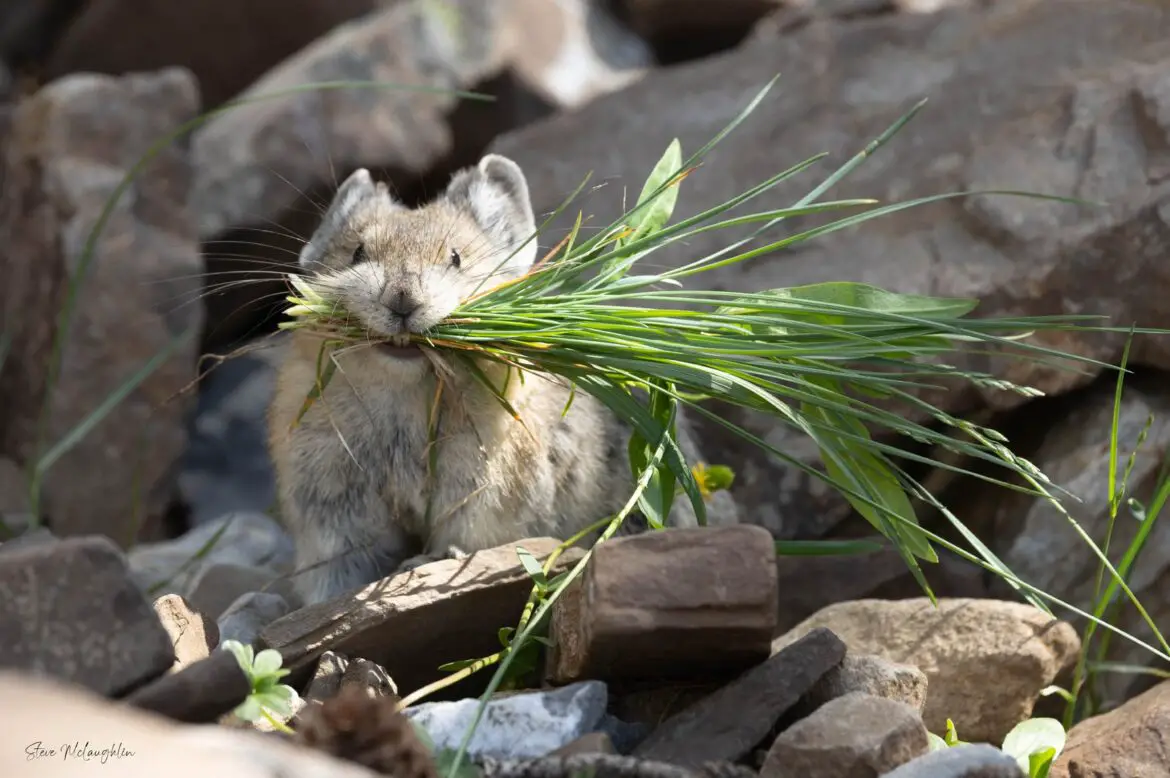As a wildlife photographer, some of the most breathtaking and captivating moments you’ll have the opportunity to capture are also the most fleeting.
The sudden burst of a bird taking flight, a predator pouncing on its prey, or a majestic creature mid-stride – these split-second instances of drama and action are what make wildlife photography so exhilarating and rewarding.
With that said, these moments are also incredibly challenging to capture effectively. With subjects that move unpredictably and rarely stay still, the margin for error is razor-thin. Blink, and you might miss the perfect shot entirely!
Many new wildlife photographers are mind boggled with how the pro’s get so many perfectly timed shots while they get home to just a few mediocre ones where the animal looks awkward, blurry or just not in the right position.
The truth is that professionals often rely on burst mode! They can take hundreds and even thousands of images just on one outing, and only select the best 3-4 for their social media, portfolio or prints.
This is where mastering the art of burst mode, or continuous shooting, becomes an indispensable skill for any serious wildlife photographer. In this article, we’ll dive deep into burst mode, exploring its benefits, techniques, and best practices.
Whether you’re a seasoned wildlife photographer looking to take your skills to new heights or a beginner eager to master this crucial technique, you’ll find insights and strategies to help you capture moments with precision and consistency.
Table of Contents
What is Burst Mode?
Burst mode captures rapid sequences of images with a single press of the shutter button. When using burst mode, the camera is able to take multiple shots in quick succession by buffering images to the memory card as fast as it can shoot.
This is in contrast to single-shot mode, where the camera only captures one photo each time the shutter is pressed.
Burst mode is ideal for action photography situations like sports or wildlife, where the subject may be moving fast and you want to optimize the chances of capturing the decisive moment.
By holding down the shutter button fully, a camera in burst mode will take photographs continuously for as long as space remains in the memory buffer.
Depending on the specific camera model, burst mode shooting speeds can range from 3 to 30 frames per second. This makes it possible to capture high-speed moments that would be difficult or impossible to get in single-shot mode.
Of course, burst mode photography also results in shooting many more images than usual per outing. Going through your photos after the shoot is a must to sort through and cull large batches of burst mode shots.
When to Use Burst Mode

Here are some situations when a wildlife photographer would want to switch to burst mode:
- Photographing birds in flight. Very fast wing movements mean burst mode is needed to capture shots without blur.
- Capturing animal interactions. Aggressive or playful behavior between wildlife happens quickly, so burst mode gets a series of shots.
- Photographing elusive animals. Many wildlife subjects are shy and flee quickly. Burst mode increases the odds of getting a shot before they run/fly away.
- Photographing jumping, leaping or fast running animals. Catching animals at certain points in their stride can make for more interesting photos. Burst mode increases your chances of catching them at just the right moment.
- Photographing hunting/predator moments. In the natural world, everything changes in the blink of an eye – or faster! Capturing the climax of a hunt, kill or fight requires continuous shooting to catch that critical moment.
- Low-light wildlife photography. Many animals are nocturnal or crepuscular. This prompts us to raise the ISO, which can introduce too much grain into the image. Burst mode lets you use higher shutter speeds and lower ISO while still giving the opportunity for several useable shots.
- Wildlife photography using long (telephoto) lenses. The longer focal lengths require faster continuous shooting to track fast moving targets effectively.
Benefits of Burst Mode in Wildlife Photography
Freezing Action
When photographing active animals like birds in flight, seals playing in the waves, or lions on the hunt, burst mode is invaluable for “freezing” fast motion. It allows wildlife photographers to capture crisp images that would be blurred if using single-shot mode.
Variety of Shots
Taking a rapid sequence of photos with burst mode gives photographers more options to select their perfect shot. Whether it’s the precise moment that wings are extended or eye contact is made, burst mode gives you several alternative versions of a shot to choose from.
Facial Expressions and Behavior
Using burst mode, photographers can capture the tiny facial expressions, body language cues, and brief moments that reveal an animal’s true personality and behaviors. A series of shots may show everything from yawn to charge to play all in seconds. Burst mode makes it simple to record the little natural dramas that unfold in an instant.
Burst mode shooting has become a tool that gives wildlife photographers more opportunities than ever before to capture the dramatic, fleeting moments that tell the true stories of animals in their natural environments.
Camera Specs for Burst Mode
Frames Per Second (FPS)
The FPS (frames per second) setting determines the maximum number of full-resolution images the camera can capture in one second of burst mode. (Not to be confused with FPS captured in video mode.)
Autofocus Settings
For moving wildlife, continuous autofocus helps latch onto sharp focus when snapping in bursts. Some cameras have advanced autofocus modes like tracking AF that can lock onto subjects. Be sure to select these high-performance autofocus options for stay-focused burst shots.
Memory Card Considerations
With burst mode eating up your storage space pretty rapidly, high-speed memory cards are a must, offering fast write times and generous storage capacities. Features like card throughput speed and buffer sizes help maximize the number of JPEG or RAW shots you can capture in one burst sequence.
Tips for Using Burst Mode in Wildlife Photography
Predicting Movement
To truly maximize burst mode, focus on observing animal behaviors to predict moments of action like chasing, fighting, or eating. Anticipating these scenarios lets you to capture the lead-up and peak of movement with a well-timed burst.
Composition Awareness
Even while panning with an active subject, try to keep composition, like the rule of thirds in mind. Many subjects, like birds in flight, can simply be kept in the middle of the frame as much as possible while moving your camera along with them. If it helps, leave some space around the subject so you can crop in later.
Storage Concerns
The massive amounts of files generated from burst mode shooting can fill up your memory cards quickly. Large-capacity cards of 128GB or higher are essential to accommodate shooting in bursts.
You’ll probably want to opt for software that helps you cull through images more quickly than using your computer’s file system. (i.e, remove any photos that aren’t sharp and decide which ones to keep.)
Battery Life
Firing the shutter rapidly can drain the battery faster. Turning off the LCD display on the back of your camera when not in use can help with this. Keeping spare batteries with you is always a good idea too for uninterrupted shooting.
Shutter Life
Photographers are sometimes concerned that using burst mode will wear out their camera’s shutter. Most cameras have an estimated number of shutter actuations before they start to degrade, usually around 200,000.
The truth is that most cameras last quite a lot longer than this – often closer to a million images! And if needed, it’s possible to have the shutter replaced without needing to replace your whole camera.
Since you wont necessarily be using burst mode every single time you go out, you shouldn’t need to worry too much about it affecting the life of your camera’s shutter.
Burst Mode: An Essential Tool for any Wildlife Photographer
While anticipation and instinct help you trigger the shutter at just the right moments, burst mode can also create its own kind of serendipity.
It offers a level of insurance to come away with frame-worthy shots despite the unpredictability of nature. With an organized workflow and the right camera settings, burst mode is effortlessly integrated into a photographer’s toolkit.
If you’d like more wildlife photography inspiration, check out our gallery! See if you can guess which ones were captured using burst mode and which ones were single shot.
